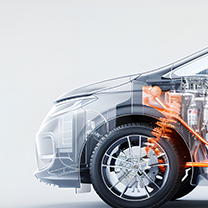
Products
Fast, Reliable, Everywhere

Solutions
Efficient, Innovative EV Charging Solutions.
The global electric vehicle (EV) market is experiencing unprecedented growth. This transformation in transportation offers clear environmental benefits, but also brings new challenges for the electric grid—particularly grid congestion during peak demand periods.
This white paper explores how smart charging strategies and the emergence of new market players, such as EV Service Providers (EVSPs), can turn these challenges into opportunities. By integrating demand response programs and encouraging prosumer participation, the energy ecosystem can become more flexible, resilient, and sustainable.

Key insight: Without intervention, unmanaged EV charging will exacerbate peak demand, reduce grid reliability, and increase operational costs for utilities.
Smart EV charging involves controlling the timing and rate of electricity delivery to EVs. The goal is to align charging with grid conditions and renewable energy availability.
Impact: By shifting EV load away from peak periods, smart charging reduces congestion, minimizes the need for costly infrastructure upgrades, and improves grid efficiency.
EV Service Providers (EVSPs) are emerging as critical intermediaries between EV drivers, utilities, and the broader energy market.
Strategic advantage: EVSPs can bundle energy services with charging, positioning themselves as influential stakeholders in both the transportation and power sectors.
EVs are uniquely suited to participate in demand response (DR) programs because:
Example DR services:
The rise of EVs is turning consumers into prosumers—both producing and consuming energy.
Benefits for the grid:
The exponential rise of EV adoption doesn’t have to lead to grid instability. With smart charging, EVSP leadership, demand response integration, and active prosumer participation, EVs can become an asset rather than a burden for the electric grid.
The future of mobility and power lies in coordination, where EVs not only consume energy but also actively support the grid, creating a win-win for drivers, utilities, and society.
